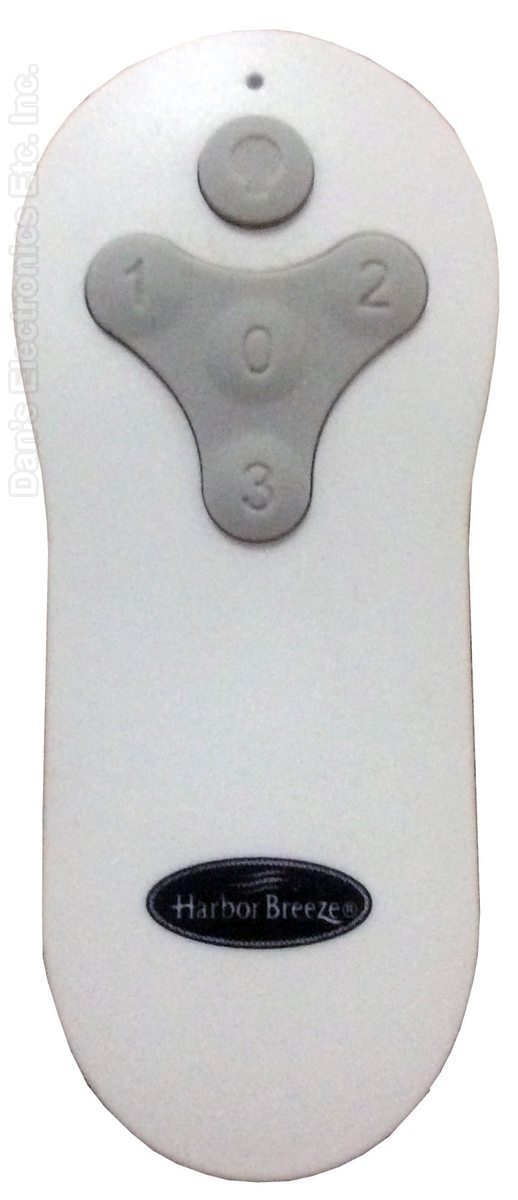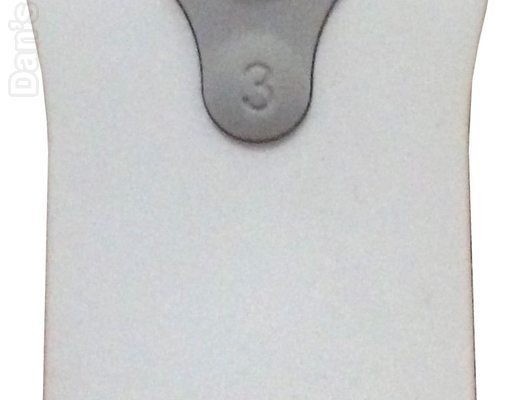
Harbor Breeze is a popular choice for ceiling fans, mainly found at Lowe’s. Their remotes are handy, small, and tend to disappear between couch cushions more often than you’d hope. But can you use just one Harbor Breeze remote to turn on, speed up, or dim the lights on multiple ceiling fans? Before syncing them all up, there are a few key things to know about how these remotes actually talk to the fans, and what needs to line up for “universal control” to work. Let’s break down how Harbor Breeze remote controls operate, what makes them unique, and whether wrangling multiple fans with a single remote is realistic—or just a distant dream.
How Harbor Breeze Remote Controls Communicate with Ceiling Fans
Here’s the thing: Harbor Breeze remotes aren’t exactly like TV remotes. They use *radio frequency* signals, not infrared. That means they aren’t “aim and click”—the signal can travel through walls, which is why sometimes you accidentally trigger the fan in the next room instead of the one above your head.
But what keeps remotes from turning on every Harbor Breeze fan in a five-mile radius? The answer is *dip switches* or a *pairing code*. Most Harbor Breeze ceiling fans and their remotes have small switches or a programmable code, usually tucked away inside the battery compartment and the fan itself. These need to match for the remote to “talk” to the fan.
Syncing up happens when the remote and the fan’s receiver share the same combination, a bit like walkie-talkies on the same channel. If you ever wondered why changing one fan sometimes changes them all, the secret is probably matching dip switch patterns or codes. This system is both a blessing and a curse: convenient when you want to control several fans at once, but a hassle when you only want *one* fan to respond.
Can One Harbor Breeze Remote Control Multiple Ceiling Fans?
Let me explain—the short answer is: *yes, but only if certain conditions are met.* If you want a single Harbor Breeze remote to control more than one fan, each fan must use a receiver with the exact same code or dip switch setting as the remote. In practice, this means you’ll need to:
- Access each fan’s receiver (usually under the fan canopy on the ceiling)
- Set every dip switch or programming code to match the remote
- Check the remote’s batteries are fresh, since weak batteries can make syncing unreliable
When you do this, pressing the button on your Harbor Breeze remote will send the same command to all fans with matching receivers. So, all the fans will turn on, turn off, or change speeds together. This is handy for large spaces like living rooms with multiple fans—or outdoors under a big patio roof.
But there’s a catch. *You can’t control them individually anymore.* Your command is “all or nothing.” If you want to dim just one fan’s light or set only one to high speed, you’re out of luck. For many people, this is a dealbreaker.
Step-by-Step: Syncing Multiple Fans to One Harbor Breeze Remote
If you’re up for a small project (and maybe a step ladder), syncing multiple Harbor Breeze fans to one remote isn’t rocket science. Here’s a simple guide:
Safety first: Always turn off power at the breaker before handling ceiling fans.
- Remove the fan canopy cover at the ceiling to access the receiver. Usually, you’ll find it in a small black box with a set of four dip switches or a reset button.
- Open the remote’s battery compartment. Look for the same set of dip switches or a pairing code button.
- Match the switches in each fan’s receiver to the remote. They must be identical. (If it’s a button, follow the pairing procedure in your fan’s manual.)
- Replace all covers and batteries, restore power, and test the remote.
Don’t be surprised if the fans act a bit quirky on your first try. Sometimes, the remote or receiver needs to be reset or re-paired. If things aren’t working, double-check every dip switch—one out of line and the whole system won’t sync. It’s a bit like those old Nintendo cartridges: sometimes you just have to jiggle things to make it work.
Common Issues When Trying to Control Multiple Fans
Honestly, there are little landmines waiting for beginners. Here are a few of the most common headaches:
Signal Interference: If you have more than one fan in different rooms and all with the same code, you might accidentally turn on a fan in the bedroom when you meant to turn on the one in the living room. Sometimes microwaves, WiFi routers, or other electronics can interfere too.
Weak Batteries: Remote acting slow or unresponsive? Weak batteries can slash your signal range and lead to inconsistent pairing. Always start with a fresh set.
Remote or Receiver Compatibility: Not all Harbor Breeze remotes work with every fan model. Sometimes, the remote won’t pair or sync, no matter how hard you try. Checking your fan’s manual or looking up the receiver model can save a lot of trial and error.
Reset Needed: Occasionally, a fan or remote gets “confused.” Performing a reset—usually by holding down the reset or pair button for a few seconds—can refresh the system and allow for re-pairing. This is especially true if you installed new receivers or replaced batteries.
Universal Remotes vs. Harbor Breeze Brand Remotes
You might be wondering if a universal remote could make things easier. Universal ceiling fan remotes are designed to work across different brands. But here’s the truth: Universal remotes are hit-or-miss with Harbor Breeze fans. Sometimes they pair up beautifully. Other times, you’ll spend hours punching buttons and reading forums with nothing to show for it but frustration.
Harbor Breeze brand remotes are generally a safer bet. They’re designed to sync easily with Harbor Breeze receivers, and their codes usually line up right out of the package. If you’re going the universal route, double-check the list of compatible brands before buying—and prepare for a bit of code testing.
Some universal remotes offer extra features, like programmable timers or smartphone connectivity, but if simple, reliable control of multiple fans is your goal, sticking with Harbor Breeze’s own remote usually means fewer headaches.
Alternatives for Individual Fan Control
If you want to control fans separately, you’ll need a different pairing code or dip switch pattern for each fan. This means one remote per fan, or a remote with multiple “zones”—which, as of now, Harbor Breeze doesn’t offer.
Another route is installing smart fan controllers that work with voice assistants like Alexa or Google Home. These let you control each fan from your phone or even set schedules. Some models replace your fan’s receiver entirely, letting you ditch the remote and use an app instead.
It’s worth weighing your needs. Do you want one-button control for all fans at once, or the flexibility to manage each fan and light individually? Most people with several fans in a home prefer individual control to avoid that “all fans on or off” dilemma.
Troubleshooting Problems with Harbor Breeze Remotes
The world’s best plans always go sideways at some point. If your remote won’t pair, here are a few places to look:
- Check all batteries—one weak or dead battery can cause all sorts of weird behavior.
- Inspect dip switches—make sure every switch is firmly in place, and matches exactly between remote and receiver.
- Try a reset—many remotes have a “learn” or “pair” button. Hold it down as directed by your manual, usually for 5-10 seconds, to force a fresh connection.
- Swap remotes—sometimes the remote itself is defective. Test with another Harbor Breeze remote if you have one.
- Make sure nothing is blocking the receiver’s signal. Occasionally, metal ceilings or heavy insulation can mess up radio frequencies.
Most fixes are simple, but if nothing works, you may have a fried receiver or a faulty remote. In that case, replacement parts are often available, though it can take a bit of research to match model numbers.
Summary Table: Pros and Cons of Controlling Multiple Fans with One Remote
| Pros | Cons |
|
|
The Bottom Line: Should You Sync Multiple Fans to One Harbor Breeze Remote?
So, can one Harbor Breeze ceiling fan remote control multiple fans? Absolutely—if you’re okay with the “all together” approach and spend a few minutes matching up those codes or dip switches. For some homes and open spaces, it’s the easiest way to keep every fan spinning at the same speed. But if you crave individual control or want to tweak each fan’s light or speed separately, you’ll need a different setup—more remotes, smart controls, or a mix of both.
When it comes down to it, the best plan is the one that matches your real-life needs. Take a few minutes to consider how you use your fans, how much remote-juggling you can tolerate, and whether you’re okay with a little DIY. That way, you’ll spend less time fiddling with remotes, and more time comfortably breezing through your day.
